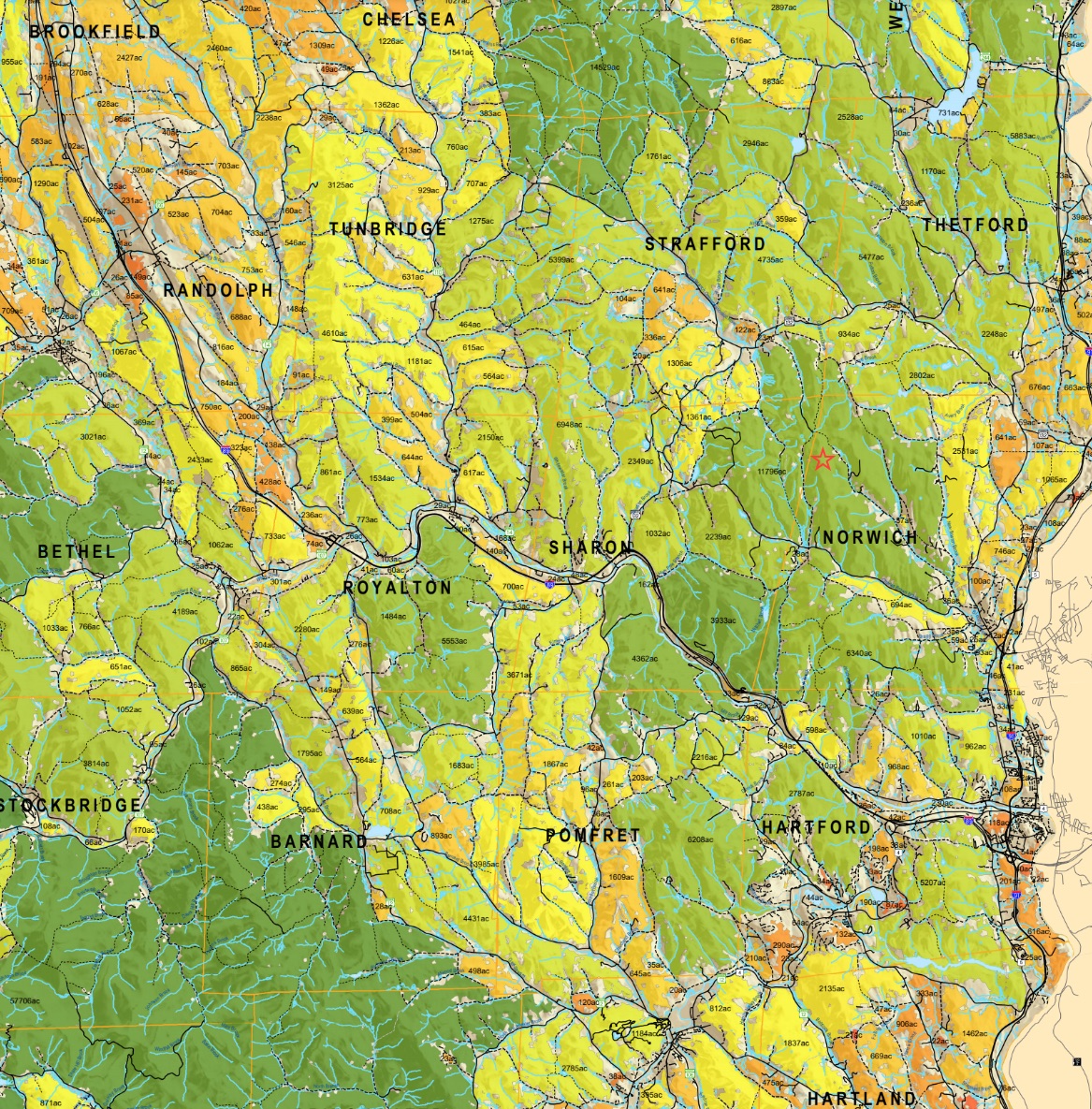Forest Connectivity Is Crucial
Published Jun 1st, 2020
 This map shows forested areas identified as higher priority for conservation in Norwich. If you own forest you would like to conserve, please contact the Norwich Conservation Commission for more information.
This map shows forested areas identified as higher priority for conservation in Norwich. If you own forest you would like to conserve, please contact the Norwich Conservation Commission for more information.
Many forest-dwelling plants and animals depend on movement across large areas of intact forest for their survival both as individuals and species.
So, wildlife corridors that connect larger forest blocks can create survival lifelines.
As part of the Conservation Commission’s efforts to better protect and connect forested land, we are working on the Woody Adams Conservation Forest project, which aims to connect the Gile tract with the Town Forest to stitch together 290 acres of permanently conserved contiguous forest.
Wildlife cameras have documented the presence of moose, bears, fishers, coyotes, gray fox and bobcat living in the forest along this contiguous ridgeline. This ecologically rich area also contains numerous vernal pools and headwater streams of both the Blood and Mitchell Brook watersheds.
Conserving large tracts of high-quality habitat enables individuals, and groups of plants and animals to find food, reproduce, rear their offspring, find shelter and disperse. For young plants and animals to survive, they need to find their own territories. For a species to survive, it must be able to travel - avoiding inbreeding, repopulating areas where it has died out, and expanding its range. Fragmenting forests into smaller and smaller patches reduces the capacity of forest-interior plant and animal species to survive. Because the patches are small, they often lack required food and shelter resources. Because they are widely spaced, travel between them is too difficult, or impossible. If the fragmentation and habitat loss is severe enough, extinctions can result.
Preserving wildlife corridors that truly function requires deep knowledge of the habitat requirements of each species. Natural features such as rivers, mountains, plant communities, and elevation, as well as human disturbances such as buildings, roads, trails, powerlines, logged areas, and fields all influence whether and how an animal inhabits or moves through an area. It’s not enough to just make day to day existence tolerable; seasonal needs like migration, mating, and overwintering are vital, too. A functional, intact forest corridor must accommodate the full range of needs of all organisms throughout their annual cycles.
With the expected changes to our forests as a result of the climate crisis, preserving large areas of undisturbed forest and maintaining robust connections between forest patches is increasingly critical to the survival of many plants and animals. As Norwich continues to experience extreme weather and warmer days and nights, plants and animals must be able to move into new undisturbed areas where they can survive.
Even before our climate began to change rapidly because of manmade pollution, our other actions, such as development of forested lands, were already causing problems. Now our plants and animals face a double whammy.
Looking to the future, Norwich will need to secure additional areas to protect our shared wildlife by conserving existing contiguous forests and ensuring they are connected by functional corridors, both to each other and to forests in adjacent towns. There is no more important legacy we can leave to future generations of Norwich residents.
Originally published in Summer 2020 Norwich Times